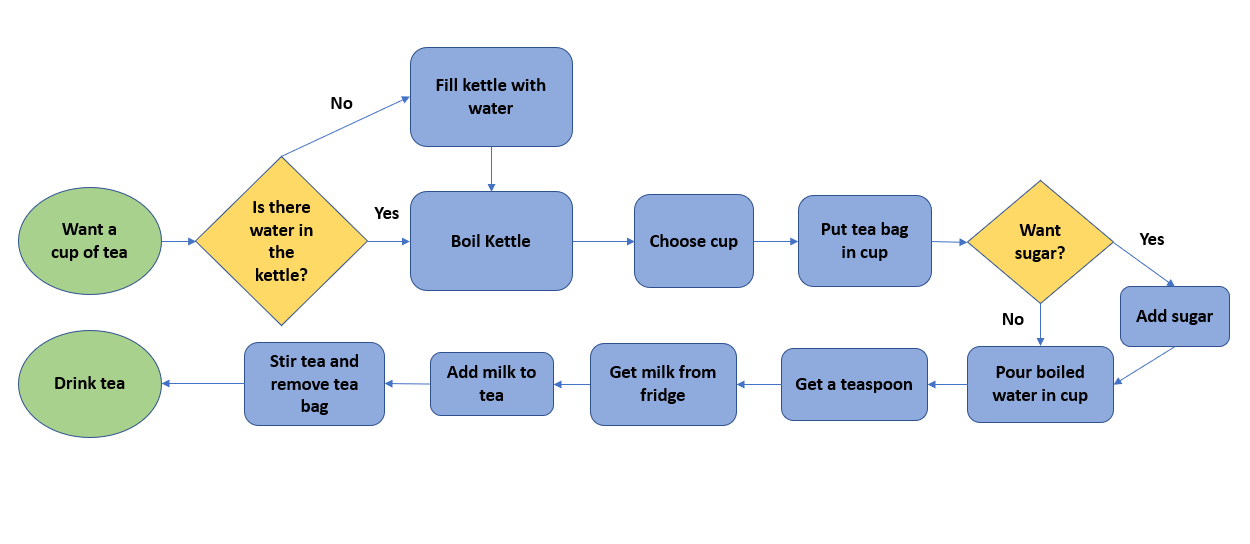Process mapping
Process mapping is a tool used to develop a ‘map’ of a process within a system. It will help you to map the whole patient journey or related processes with a range of people who represent the different roles involved.
Process mapping can be used to help a team visualise and understand where the problems are and identify opportunities for improvement. It can identify duplication, variation, unnecessary steps and where there may be risks.
Mapping is a great way of revealing the complete process – rarely does a single healthcare worker know all the processes / people involved in the patient journey. It will help staff understand how complicated the systems can be for patients, showing how many times the patient has to wait (often unnecessarily) and how many different people a patient meets.
Here is a simple example of a high level process map:
Key to process map
- Oval:
- shows the start and end of a process and what is required.
- Arrows:
- show the direction or flow of the process.
- Diamond:
- represents the stage in the process where a question is asked or a decision is required.
- Box:
- shows the activities or tasks of the process.
There is software that can help you to develop process maps but in a group setting you can use rolls of paper (lining paper from a DIY store); marker pens, post-it notes in different colours to represent the four different symbols, a flip chart to ‘park’ issues and display ground rules for your session.
Once you have your high-level process map you will start to be able to understand how the process works and where there are problems, drilling down into these with more detailed process maps. Further work may be required to analyse the problem areas identified, eg seek stakeholder feedback or further data collection.
The information and level of detail required will depend on the scope of your project.
Scope
- What do you need to know?
- How simple can you go?
- Are you working at a high-level or focusing in more detail?
Knowing whose views you will need to inform the improvement is important. You should consider:
- Whose views do you need?
- How will you engage those individuals?
- How will you capture their views?
Ideally you will know what your problem areas such as the point in your process where a constraint causes flow to be slowed. This may already have been identified right at the start of the project.
What next?
Using the process map to initiate redesign
Once the process map has been drawn the next step is to identify where the process can be improved by re-designing or removing elements of it.
The key to success here is to keep the patient at the centre of your plans and to consider the potential for a ripple effect through the organisation. Getting your part of the system right does not help the patient if another part of their journey is made worse as a result.
Learn more about Process maps here:
- Whiteboard: flowchart
- Whiteboard: flowchart 2
- https://qi.elft.nhs.uk/resource/flow-diagrams/
- Improvement Leaders’ Guide – Process mapping, analysis and redesign
Acknowledgements
With thanks to Oxford Health for their help in developing this information.



